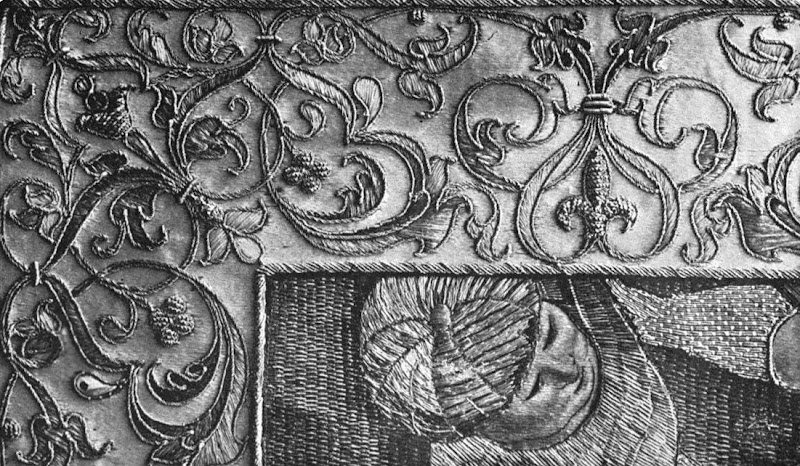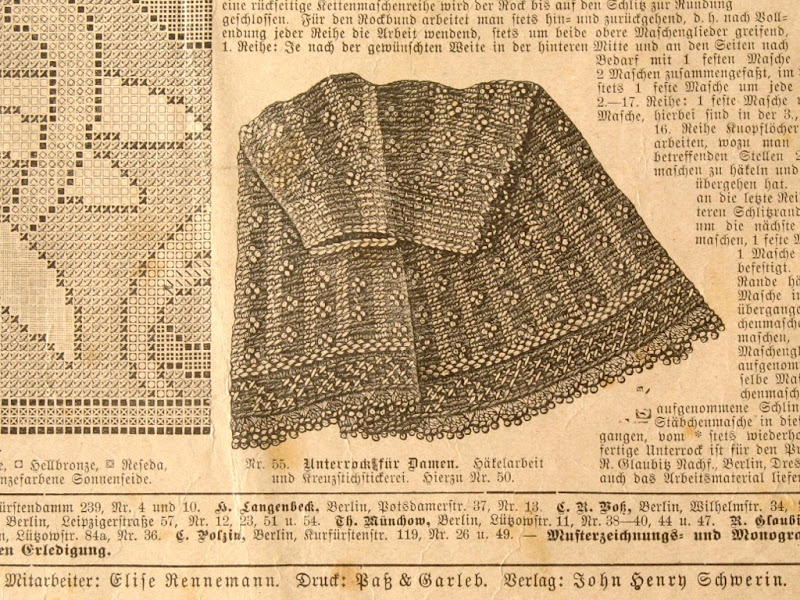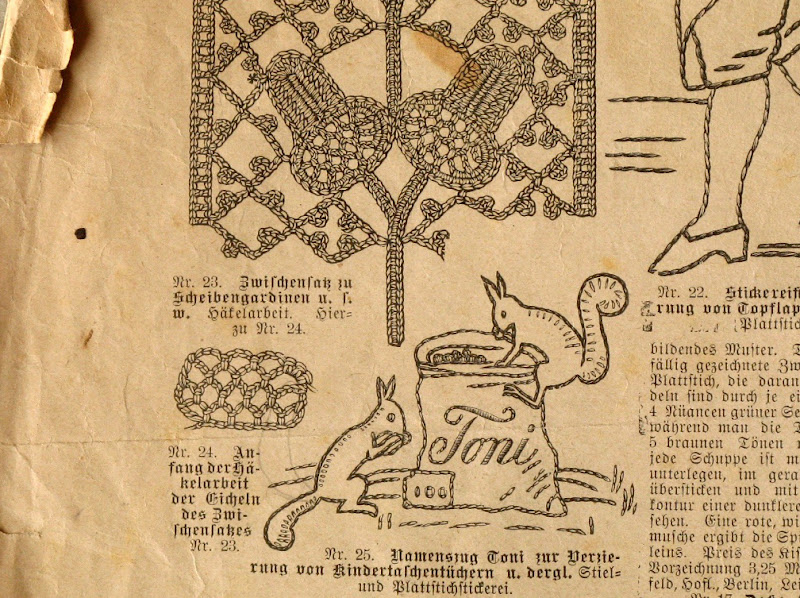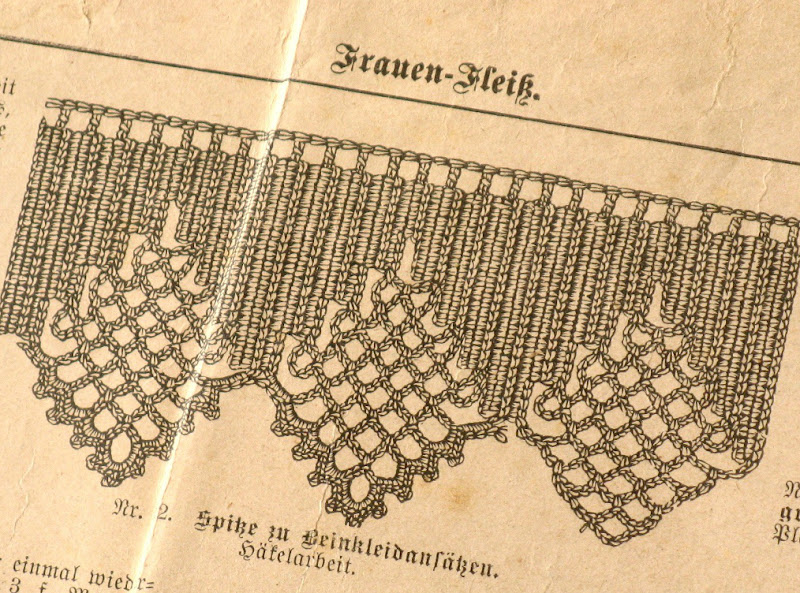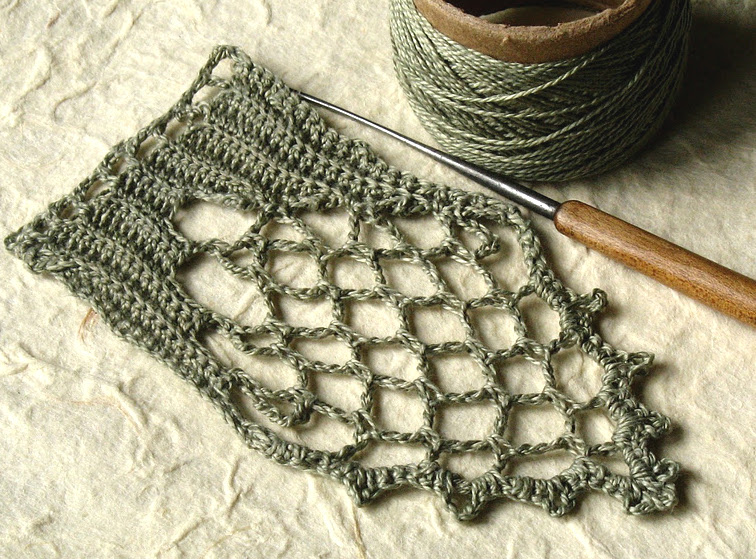There is a 'new' magazine issue in my library: Eesti Naine (Estonian Woman) from January 1933. This is the oldest monthly women's magazine of Estonia, published almost continuously since 1924.
There are articles, essays and poetry in the magazine, but about a half of the contents is dedicated to home, fashion and crafts.
These lovely fitted and draped dresses are only a few examples from the collection of 60 outfits in the issue. There was no pattern sheet included, but anyone could order sewing patterns by mail, made to fit exactly to their size. Just send in your measurements and the money: 20-50 cents plus delivery costs 10 cents per pattern. Add a sketch, if you'd rather have a pattern for something that was not in the magazine. This system is probably not working anymore...
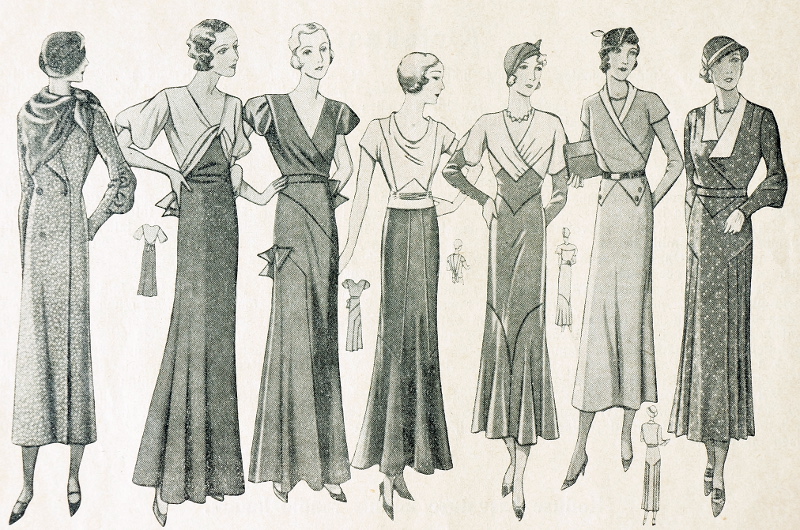
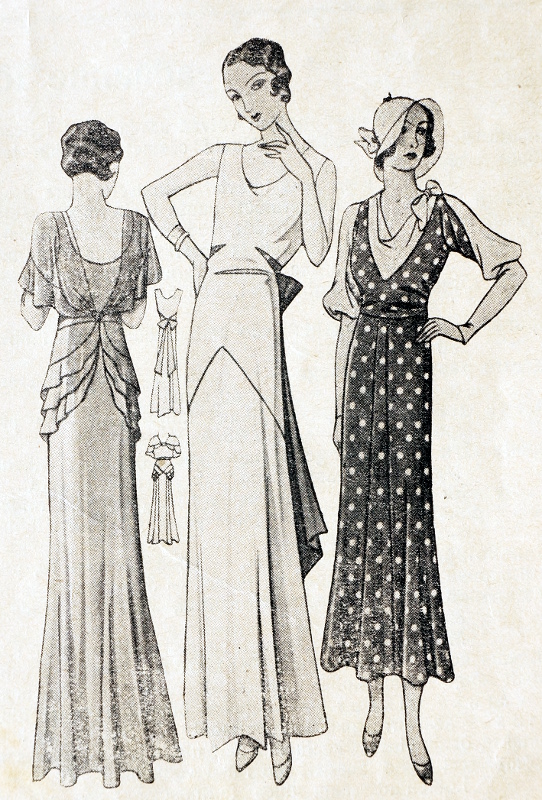
For knitting, there are some interesting designs, like this lace sweater in two colours:

Colourful striped sports sweater with matching scarf and hat:

Wool sweater to be knitted using two different stitch patterns or colours:

The schematics for this sweater looks like this (measurements in centimeters), that and the two explaining text sentences is all the pattern includes:

Crochet vest variations for him and for her with schematics (no stitch pattern, seam neckline and armholes with a single crochet row):


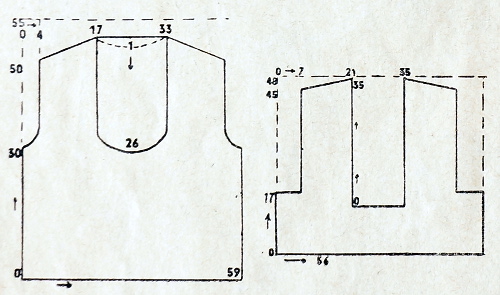
There was also an article about washing woollen garments that might contain some useful evergreen tips for us today:
How to wash a wool sweater without colour bleeds
To determine if a knitted garment is colourfast, wet a part of it in an unnoticeable place with cold water and then squeeze with white towel. When towel gets coloured, it is recommendable to only dry clean the garment. However, with care it can be washed at home as well.
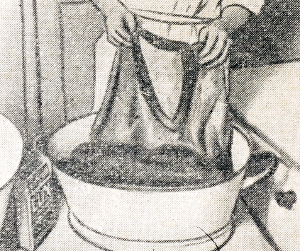
Wet the sweater in cool rainwater, take it out and press out water. Then put the sweater quickly into cool soap foam and squeeze throughout. Use as many quick soap water baths as necessary to clean the sweater - until foam will not disappear.
Rinse in soft cool water. Add vinegar to the last rinse to fasten the colours. Squeeze dry and lay flat on a towel or sheet.
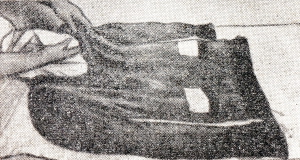
Drying is the most important part, garments get ruined mostly while drying. Insert clean towels in the pockets, under the sleeves and between front and back parts of the sweater. Roll it and press water firmly into the towel. Remove the wet towels, add new dry ones, and repeat the rolling for two more times.

Then lay the sweater flat and let dry on a new dry towel on a table or bed. It will dry fast now and excess water cannot make the colours bleed along the fibres. Do not dry in a too hot place like next to stove, that will make the sweater shrink. Do not hang the garment, as the water will flow to the bottom and make the colours bleed on the edges; besides, it will not dry evenly. When dry, the sweater can be ironed with cool temperatures.





























